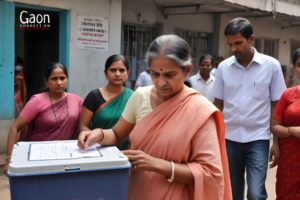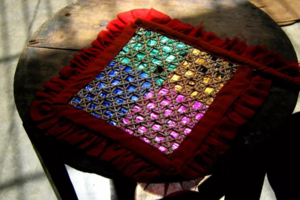With almost two months remaining in the current fiscal year (2021-22), two groups of activists who assess the implementation of the Mahatma Gandhi National Rural Employment Guarantee Act (MGNREGA) held a joint press conference on February 10 and pointed out that only four states have funds left to provide employment in the rural areas. These four states are Maharashtra, Odisha, Goa and Mizoram.
The virtual press conference was jointly organised by Peoples’ Action for Employment Guarantee (PAEG) and NREGA Sangharsh Morcha (NSM) in which labour activists also questioned the Central government’s move to slash funds for the rural employment guarantee scheme. The press conference was organised a week after the Union Finance Minister Nirmala Sitharaman presented the Budget for the next fiscal which reduced the allocation for MGNREGA by 25.5 per cent.
Amit Basole, head of the Bengaluru-based Centre for Sustainable Employment at Azim Premji University, who presented the opening remarks in the press briefing underlined that the role of MGNREGA becomes way more important in the socio-economic conditions prevailing in the hinterland.
“MGNREGA is a lot more important than ever before as people in rural areas have incurred huge amounts of debt. Even with inadequate fulfilment of demand, MGNREGA has performed the role of a crucial safety net in the rural areas. It has provided livelihood when people couldn’t access other sources of income,” Basole said in the press briefing.
Also, a document prepared by the PAEG mentioned that the national net balance of MGNREGA funds is at a deficit of Rs 151,90o million. The document which was named as ‘NREGA tracker’ also highlighted that the wage payments amounting to Rs 32,730 million have been delayed by the central government.
The tracker attempts to closely monitor the performance of the rural employment scheme and assesses MGNREGA from April 1, 2021 to January 31, 2022.
The MGNREGA tracker’s findings for the year April 2021 to January 2022 revealed that if the expenditures in this financial year for which payments are still pending are not included while calculating the balance of NREGA funds, the net balance is a negative Rs 23,377.80 million.
For the 2022-23 fiscal year, Union Minister Sitharaman announced on February 1 that a total of Rs 730,000 million has been allocated for MGNREGA. In the year 2021-22, the revised estimate for the scheme was Rs 980,000 million. However, the actual spending under MGNREGA for 2020-21 was Rs 1,111,700 million.
Also Read: Rural development ministry clarifies funds availability for MGNREGA; states seek additional money
Findings of the ‘NREGA tracker’
The NREGA tracker also highlighted that 2988.60 crore person days of work have been generated till January 31, 2022 which is nine per cent less than the same period of last year.
Also, it revealed that 11 per cent of the total households which demanded employment were not assigned work under MGNREGA.
MGNREGA activists emphasised that insufficient fund allocation by the government year after year is leading to a decrease in the person days of work generated each year which will lead to an increase in unmet demand and pending liabilities every year.
The tracker also showed that while MGNREGA guarantees 100 days of employment in a year to the rural citizens, only 12.31 per cent of households were employed for 81-99 days and only 4.62 per cent were employed for 100 or more days.
Basole, the academician from Azim Premji University also explained the importance of ensuring that MGNREGA functions as effectively as possible even if the employment is gradually rising.
“I am emphasising this because the government has taken the line that employment is recovering so we don’t need expanded allocation for NREGA. That’s a mistaken thing to do because effects of the income deficit are long-lasting and even if the income comes back, that deficit will remain so having a program like MGNREGA fulfils a crucial function,” Basole said.
The NREGA tracker highlighted that wage payments to the value of Rs 32,730 million have been delayed by the central government.
This amounts to nearly six per cent of total wage payments and involves almost two crore wage payment transactions.
Payment of compensation owed to workers for delayed payment of wages stands at Rs 117.8 million, of which only 1.42 per cent has been paid. Also, six million wage payment transactions amounting to Rs 8,166.30 million have been rejected as on January 31.
Women beneficiaries under MGNREGA lowest in Uttar Pradesh
With respect to the proportions of the number of women workers and the person days of work generated for them are highest in Tamil Nadu, at 81 per cent and 85 per cent respectively. On the other hand, they are the lowest in Uttar Pradesh at 36 per cent and 37 per cent respectively.
The percentages of both women workers to total NREGA workers and the person days of work generated for women to total person days of work generated have remained relatively constant over the past five years including financial year 2021-22, both at a little over 50 per cent, the tracker highlighted.
The tracker also mentioned that the percentage of person days of work generated for women workers, over these past five years, has been a little higher than the percentage of women workers, at an average of 2.26 per cent.
Answering a question about how women are affected due to budget cuts for MGNREGA, Basole said that women’s participation is extensive in many parts and defunding MGNREGA impacts women directly.
Fund release towards MGNREGA a continuous process: GoI
In October 2021, PAEG had released its half yearly tracker for April 2021 – September 2021 which showed that 90 per cent of the allocated annual budget for MGNREGA had already been utilised, while the remaining funds available were sufficient to cover at most 13 days of employment per household till March 31, 2022.
In response to the findings of the MGNREGA tracker, the rural development ministry had stated, “The Indian government is committed to release funds for wage and material payments for proper implementation of the Mahatma Gandhi National Rural Employment Guarantee Act (MG-NREGA), 2005.”
The ministry had also added that funds released towards wage and material are a continuous process. The ministry highlighted that there has been an increase of more than 18 per cent of funds allocation for the current financial year in comparison to the previous financial year as a budget estimate.
“We can understand from the data that had the government provided adequate budget allocation and funds been provided to the states then there wouldn’t have been any delay in payments. They’re saying that they will allocate more funds, but in how many months will they allocate the money?,” questioned Mukesh Goswami, who is associated with NSM in Rajasthan.
Also Read: Labour activists demand daily wage hike for MGNREGA workers; write to PM Modi
He added that there are several states where payment has been pending since a long time including Rajasthan where payment hasn’t been made since december 15 and Jharkhand, West Bengal among others.
Also, Ashish Ranjan, an activist working for the rights of MGNREGA workers in Bihar said that if fund flow is not regular then it’s bound that people will not be able to get work.
“Many a times it so happens that people finish their work and sit idle because they don’t get payment. Because of this, they don’t work further (under MGNREGA) as they don’t have funds and they find work somewhere else. Thus, their legal guarantee of 100 days does not get completed,” Ranjan said.
“While the government is saying that it can provide funds but the question is will it? And if it will, then to what extent? And history is a witness to the testament that the government doesn’t flush in the adequate needed funds when needed,” he added.

















